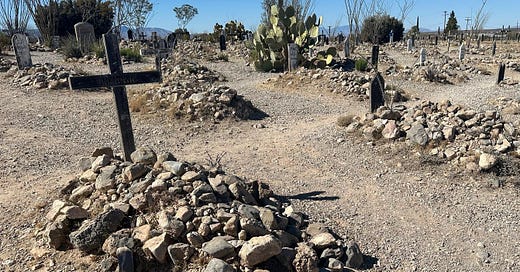I am walking among the dead. The epitaphs here at Boothill Graveyard in Tombstone, Arizona, testify to a distant world of blood and gunfire, a time when violence was unremarkable and human life held cheap. No tombstones here; only weathered wooden crosses and headboards, many of which simply bear a name, date and cause of death. The most common epitaphs…
Keep reading with a 7-day free trial
Subscribe to Andrew Doyle to keep reading this post and get 7 days of free access to the full post archives.




